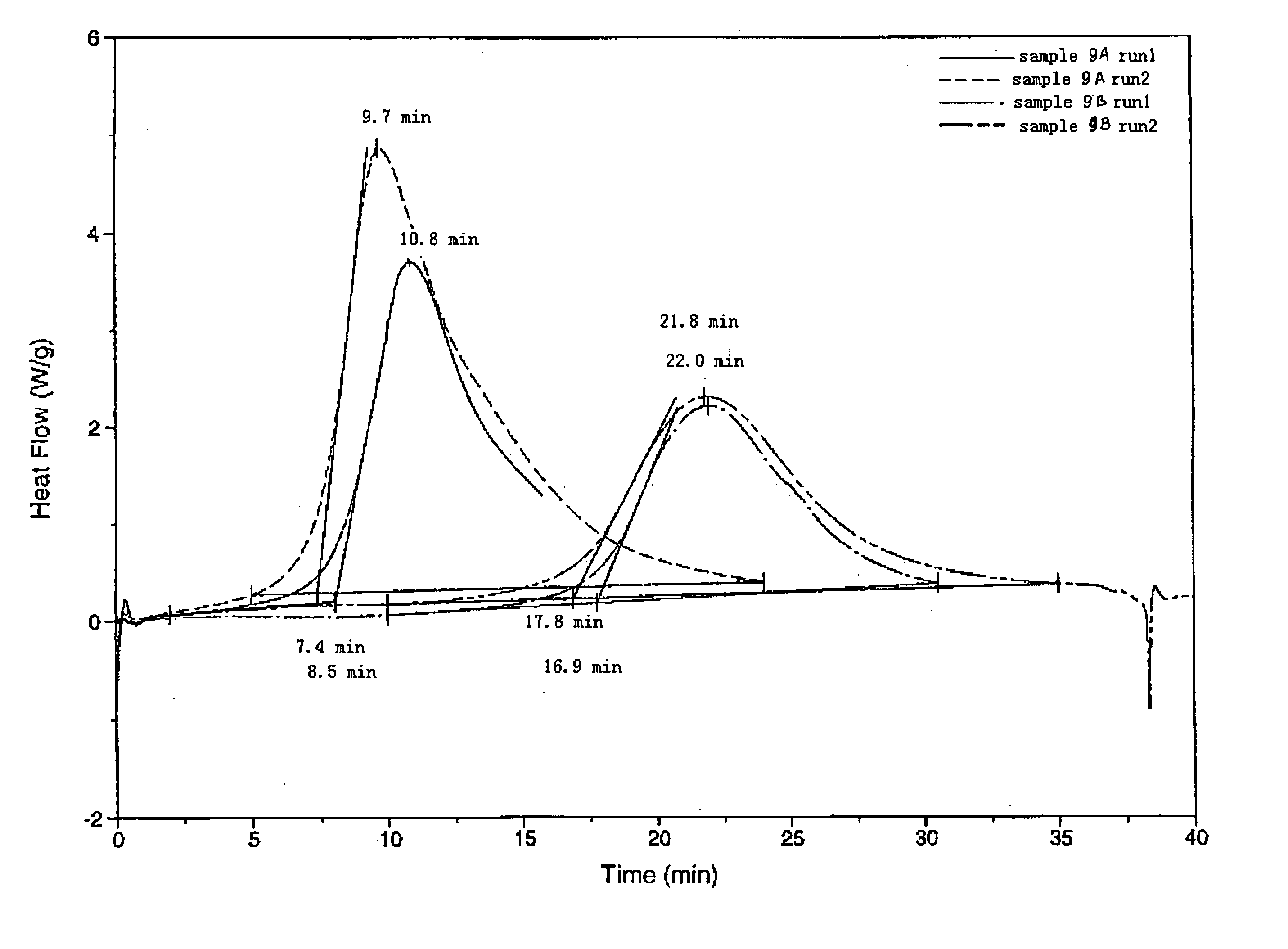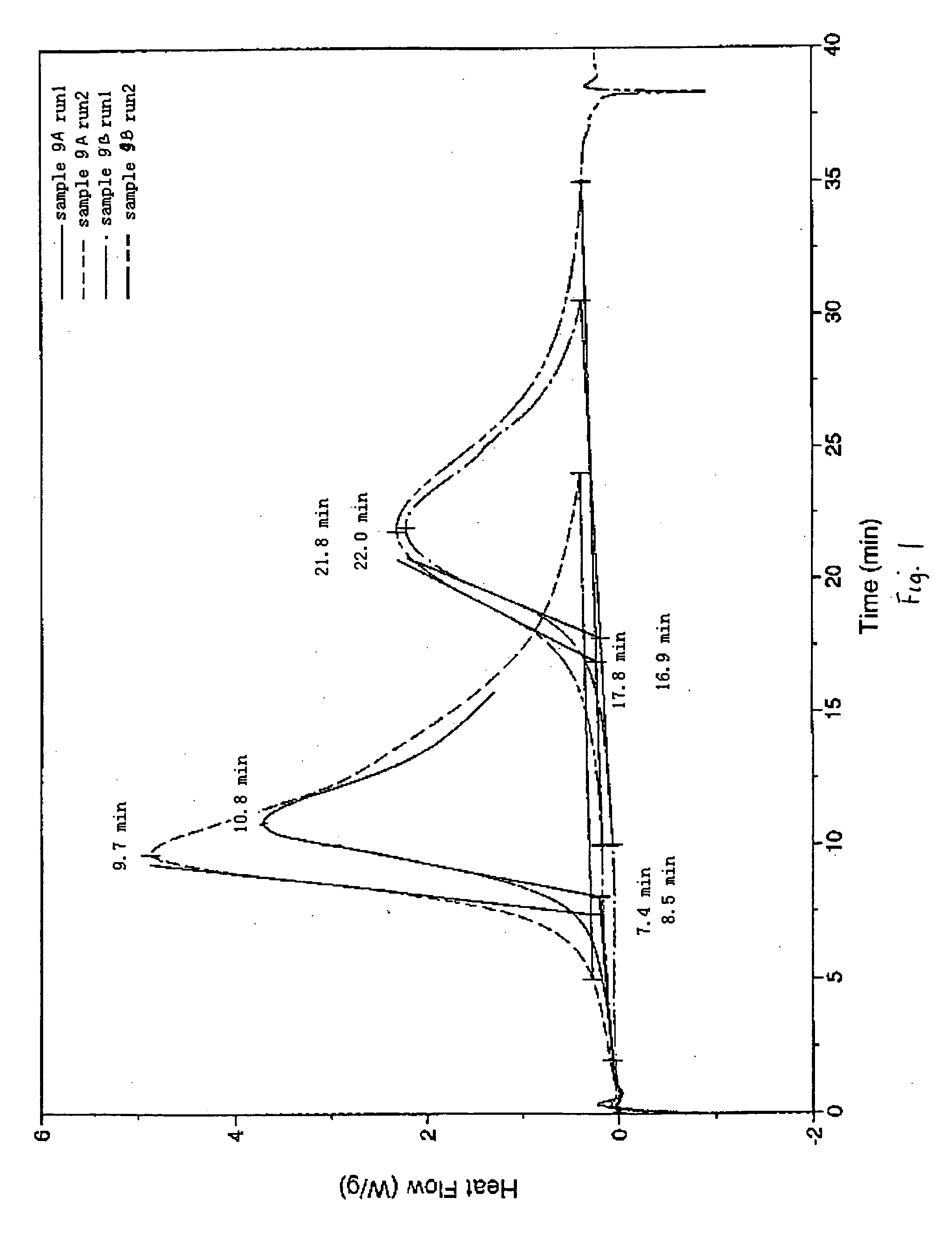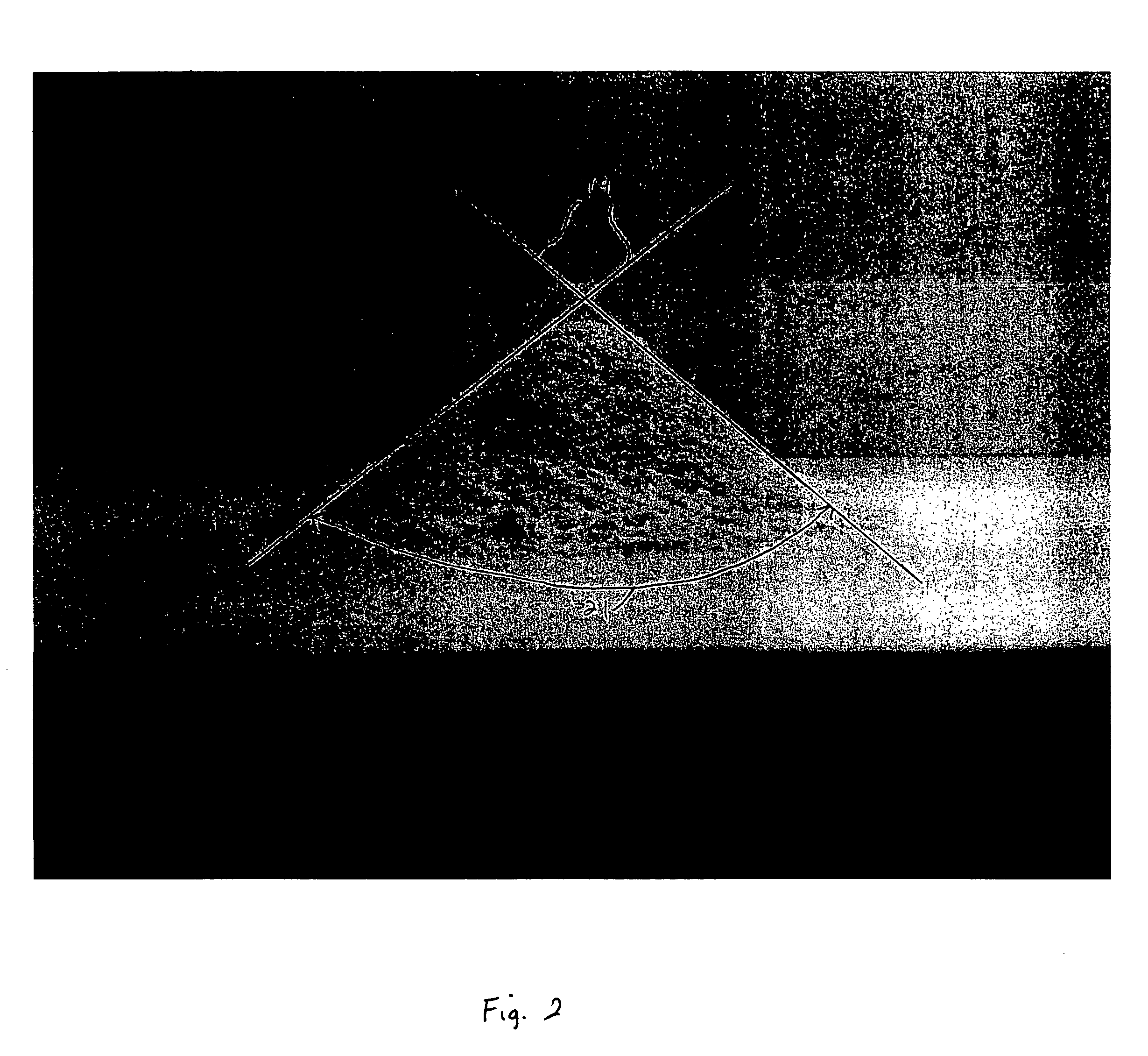Dispersible protein composition
a technology of protein composition and dispersible powder, which is applied in the field of dispersible protein composition, can solve the problems of not readily dispersible liquids less appealing edible liquid materials, and use of soy protein powder
- Summary
- Abstract
- Description
- Claims
- Application Information
AI Technical Summary
Benefits of technology
Problems solved by technology
Method used
Image
Examples
example 1
[0050] In this example, the surface tension of a number of aqueous solutions containing 2 wt % of lecithin material (prepared by dissolving the lecithin material at 60° C.) was measured. In addition, for one type of lecithin material, the surface tension was measured at 2 wt % as well as 0.5 wt % and 4 wt % concentrations. All of the lecithin materials included no more than about 5 wt % oil (“deoiled lecithin material”). The surface tension was measured using the Wilhelmy method and a digital tensiometer (Kruss, Model K10ST) with a platinum plate at 24° C. A description of the Wilhelmy method may be found in “The Colloidal Domain,” D. F. Evans and H. Wennerstrom, VCH Publishers Inc., New York, 1994, pg. 52. A vertical plate of known perimeter was attached to a balance and the force due to wetting is measured. To avoid contamination, the platinum plate was cleaned using a flame before each solution was tested. Table 1 shows the results for each solution.
TABLE 1Concen-Surfacetration...
example 2
[0051] In this example, 20 kg of soy protein isolate (5.1 wt % moisture) was introduced into a FluidAir Model 150 fluid-bed coater / drier. The initial process conditions were set as follows. Inlet air temperature: 50-60° C.; air flow: 300-350 cubic feet per minute at standard conditions (SCFM); product temperature: 25-30° C.
[0052] 4 kg of a solution of unmodified (either chemically or enzymatically) lecithin material in water at 10 wt % concentration was spray coated on to the fluidized soy protein isolate powder. The unmodified lecithin material included no more than about 5 wt % oil. The spray coating was done at the following conditions. Inlet air temp: 60° C.; air flow: 350 SCFM; spray air pressure: 45 psi; solution spray rate: 200-230 grams / min; product temperature: 25-30° C.; equilibrium moisture content: 10-13%.
[0053] A small sample was removed after depositing 1 wt % lecithin material based on the total dry weight of the resulting protein composition. After all the solution...
example 3
[0054] The dispersibility index for the protein composition having 1 wt % of lecithin material and the protein composition having 2 wt % lecithin material prepared as described in Example 2 was measured as follows. A level teaspoon of the powdered protein composition was dropped onto the surface of 200 ml water in a 250 ml beaker. The spoon was used to gently stir the mixture in a rhythm of 5 turns clockwise followed by 5 turns counterclockwise, repeated until the powder is completely dispersed in the water and clumps do not float to the surface. The time from the beginning of stirring until complete dispersion was measured and recorded. The average of two tests according to this procedure are what is referred to herein as the “dispersibility index.” A comparison is shown of the protein compositions from Example 2 in Table 2. If more than 120 seconds elapses before complete dispersion, 120+ is recorded and this is considered very poorly dispersible material.
TABLE 2DispersibilitySa...
PUM
 Login to View More
Login to View More Abstract
Description
Claims
Application Information
 Login to View More
Login to View More - R&D
- Intellectual Property
- Life Sciences
- Materials
- Tech Scout
- Unparalleled Data Quality
- Higher Quality Content
- 60% Fewer Hallucinations
Browse by: Latest US Patents, China's latest patents, Technical Efficacy Thesaurus, Application Domain, Technology Topic, Popular Technical Reports.
© 2025 PatSnap. All rights reserved.Legal|Privacy policy|Modern Slavery Act Transparency Statement|Sitemap|About US| Contact US: help@patsnap.com



